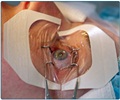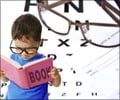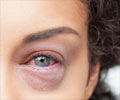The visual function and daily life of people whose sight can't be corrected with glasses or contact lenses can be improved by rehabilitation specialists.

‘A home visit system is very beneficial, delivering care and advice that can promote independence and recover lost skills.’





Professor Tom Margrain from Cardiff University's School of Optometry and Vision Sciences said: "With low vision affecting around 2m people in the UK, it's important to identify visual rehabilitation services that can improve the independence and quality of life of those with sight loss. We already know that visual rehabilitation is beneficial to people with low vision but what we don't know is the best method of delivery. Our new research reveals that a home visit system is very beneficial, delivering care and advice that can promote independence and recover lost skills." Dan Pescod, RNIB's Head of Campaigns, added: "This study is a useful addition to growing evidence about the efficacy of vision rehabilitation in helping blind and partially sighted people to live independently. The research also reinforces the importance of RNIB's See, Plan and Provide campaign, which calls for better access to timely, high-quality vision rehabilitation support."
During the study, 67 study participants were split into two groups for a six month period. Half were seen at regular intervals by visual rehabilitation officers, employed by the charitable organisation Sight Cymru, and the other half were only entitled to receive routine appointments at hospitals or community-based low vision optometric services.
During home visits, needs were assessed in areas such as functional vision, lighting, emotional difficulties, personal hygiene, medication management, kitchen safety, household tasks, welfare entitlements, orientation and communications. Training and support was then tailored within these areas, for example, support in the use of low vision aids, dosette box (pill organiser) provision, liquid level indicator provision and long cane training. The number of visits was determined by the Visual Rehabilitation Officer on a case-by-case basis.
About 70% of people in the home visit group reported that the visits were 'extremely helpful', with kitchen training highlighted as the most helpful aspect.
Advertisement
Source-Eurekalert











